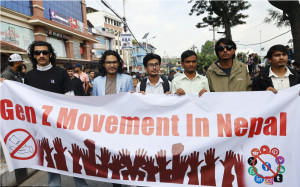Columns
In the child’s mind
Schools should act now and develop policies to address mental health issues and promote well-being.
Zehra Kamal Alam
Children constitute around 45 percent of the Pakistani population, with 22.7 percent adolescents from 10 to 19 years. Along with their educational, safety and physical health needs, there is also an urgent need to prevent and respond to their mental health challenges. The WHO estimates that 15 percent of the global burden of disease among 10-to19-year-olds is due to mental disorders. Globally, one out of seven children in this age group experiences some form of mental illness, the common ones being depression, anxiety and/or a behavioural disorder.
Death by suicide is also a grave concern, with WHO data estimating suicide to be the third leading cause of death among 15-to 29-year-olds—289 child and adolescent suicide reports in Pakistan were documented between 2019 and 2020 as per a recent data analysis, which found that almost an equal number of boys and girls died by suicide, especially in late adolescence.
While all Pakistani children aren’t in school, schools can still play a critical role in promoting well-being, and in preventing and responding to mental health challenges including violence, bullying, suicide and self-harm behaviour. Schools can also be spaces of normalcy and safety for children living in difficult and potentially abusive households. These school-based mental health programmes are considered effective for low-income countries as well where there is already a dearth of specialised prevention and response services.
School-based mental health and psychosocial programmes in Pakistan have been gaining some traction, at least in upper-class private and some charity-run government and community schools. The initiatives range from social emotional learning programmes, teachers training on mental health issues and provision of guidance and mental health counselling support for students.
As with the overall hushed societal attitude towards suicide, addressing this subject also remains taboo in schools. There is the fear that such incidents will be blamed on the school and tarnish its reputation. Feeling ill-equipped to deal with such situations make schools turn a blind eye and not develop appropriate policies and measures to prevent and respond sensitively and effectively. The fact that until recently, suicide was considered a criminal matter in Pakistan may also have added to the reluctance to address it.
There is no one single effective strategy to address suicide risk, yet global best practices recommend preventive and response strategies for schools. These include training and supporting teachers, developing clear policies to prevent, respond to and deal with a suicide, developing life skills in students, focusing on improved relationships of the students with their peers and teachers, identifying students at risk, developing a safety plan with at-risk students, connecting students to school counsellors or outside professional resources, involving caregivers in making the students’ home and other places safe by removing access to means of suicide.
My own work with the mental health and counselling programme of some schools in Pakistan shows that self-harm and suicidal behaviour are a reality that cannot be ignored, and must be addressed sensitively and directly. Conducting a suicide and self-harm risk assessment; informing students about limits to confidentiality in advance; working with students to develop a safety plan that includes identifying safe adult care-givers; and referral to professionals outside school for evaluation for medication are some evidence-based strategies.
Improving protective factors such as building self-esteem, friendships, and positive relationships with adult caregivers and reducing risk factors such as bullying, violence, and financial and academic challenges, are part of the follow-up counselling and psychosocial support extended to students. Ensuring students have access to continued education and links with peers in case a student needs to be on medical leave, and educating teachers about safety measures and the possible side effects of medication can also be part of the well-being strategy. The aim of these efforts should be to support students and ensure their comfort in reporting problems, instead of letting them fear negative repercussions such as expulsion.
It is imperative for schools to act now and develop polices to address mental health issues including suicide and self-harm behaviour. Given that global best practices recommend minimising institutionalised care and strengthening community-based systems of care including in schools, this is especially the need of the hour for countries like Pakistan, where child mental health support services are few.
—Dawn (Pakistan)/ ANN




 21.12°C Kathmandu
21.12°C Kathmandu















